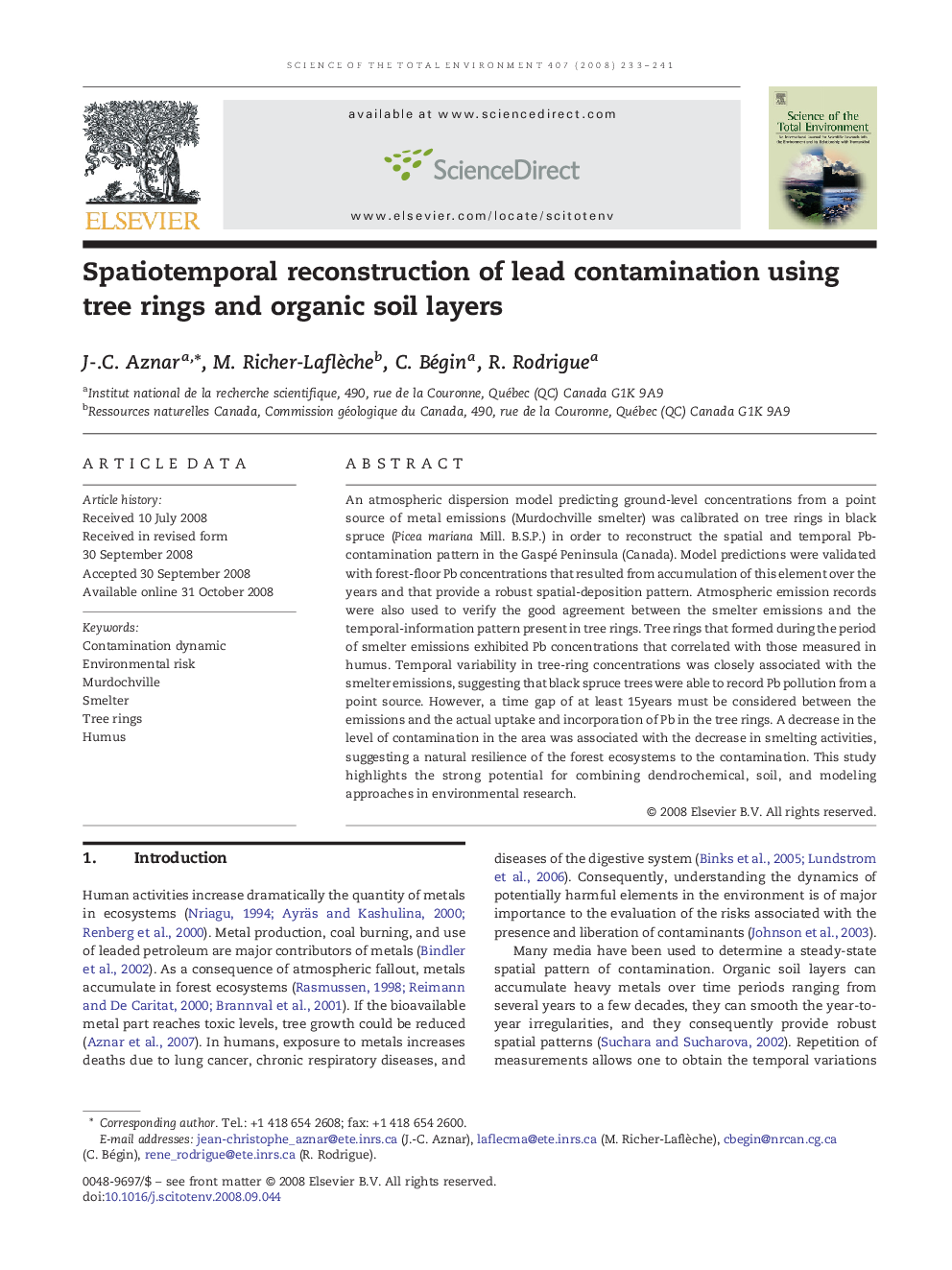| Article ID | Journal | Published Year | Pages | File Type |
|---|---|---|---|---|
| 4432480 | Science of The Total Environment | 2008 | 9 Pages |
An atmospheric dispersion model predicting ground-level concentrations from a point source of metal emissions (Murdochville smelter) was calibrated on tree rings in black spruce (Picea mariana Mill. B.S.P.) in order to reconstruct the spatial and temporal Pb-contamination pattern in the Gaspé Peninsula (Canada). Model predictions were validated with forest-floor Pb concentrations that resulted from accumulation of this element over the years and that provide a robust spatial-deposition pattern. Atmospheric emission records were also used to verify the good agreement between the smelter emissions and the temporal-information pattern present in tree rings. Tree rings that formed during the period of smelter emissions exhibited Pb concentrations that correlated with those measured in humus. Temporal variability in tree-ring concentrations was closely associated with the smelter emissions, suggesting that black spruce trees were able to record Pb pollution from a point source. However, a time gap of at least 15years must be considered between the emissions and the actual uptake and incorporation of Pb in the tree rings. A decrease in the level of contamination in the area was associated with the decrease in smelting activities, suggesting a natural resilience of the forest ecosystems to the contamination. This study highlights the strong potential for combining dendrochemical, soil, and modeling approaches in environmental research.
